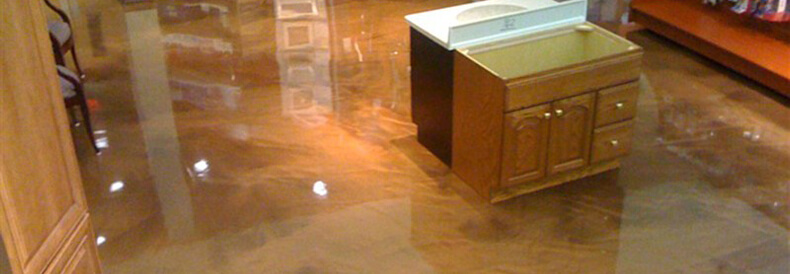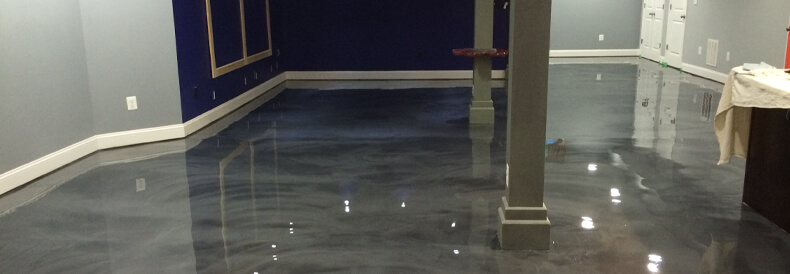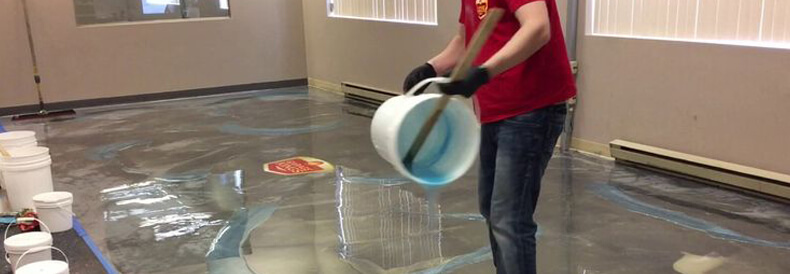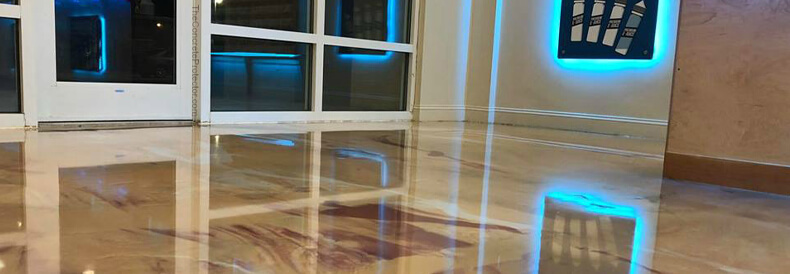Epoxy Flooring, and How Does It Work?

Epoxy flooring is one of the most versatile flooring systems on the market today! This resinous concrete coating has made its way into homes and businesses all across America!
You may be considering this popular flooring solution, but the questions are, “What is epoxy flooring? How does it work?”
That’s precisely what we’re here to answer! In the article below, we’ll cover all the info on epoxy flooring and how it works so you can make an informed decision! Continue reading to learn more!

Epoxy flooring is a resinous floor coating that is highly durable and long-lasting. Epoxy floors consist of a two-part epoxy system that consists of epoxy primers and hardeners. These compounds allow the epoxy to form a strong bond with the floor’s substrate. Typically, an epoxy floor is made up of multiple layers of epoxy, making it at least two millimeters thick. The increased durability of epoxy means that it can handle various impacts and abrasions without being damaged in the process.
Epoxy flooring can be used just about anywhere! From bedrooms and basements to retail stores and factories, epoxy flooring can be beneficial to anyone! This flooring system can be completely customized with a myriad of colors, patterns, and textures.

The Installation Process
To begin explaining how epoxy flooring works, we start with the installation process! Installing an epoxy floor is a process that starts by cleaning and inspecting your existing concrete for damage.
If any damage is present on your floor, it will need to be repaired before your contractor can start applying the epoxy. Cracks are typically filled with an injectable epoxy filler that prevents this damage from spreading. Chipping areas are usually patched with a simple concrete patch.
Once the repairs are complete, the surface prep can begin. The concrete’s surface will be prepped by grinding it down to a level, blemish-free surface. This is accomplished using a floor grinder equipped with a diamond grinding wheel in most cases, though shot blasting is another accepted technique. The purpose of grinding the floor down is to remove minor blemishes and ensure that the epoxy adheres properly to the concrete substrate.
After the prep work is finished, the actual application of the epoxy can be started. The epoxy resin and hardener are mixed and applied to the concrete, usually using rubber squeegees or a similar tool. Depending on the floor’s desired thickness, multiple layers will be poured. Lastly, the clear topcoat will be applied to achieve the desired thickness.
With your new epoxy floor in place, it will need time to cure before you can use it. After 24 hours, the epoxy floor will be 90% cured, which means you can walk on it, but vehicle traffic is not recommended. After 72 hours, the floor is 100% cured and clear for full use.
How the Installation Process Affects Epoxy Flooring
The chemical bond that epoxy forms with the substrate during installation creates a strong surface that is durable, highly resistant to degradation, and will last for decades!
As epoxy flooring is installed by pouring it directly over the substrate, it’s seamless. The seamless installation of epoxy flooring means that maintenance is much more comfortable and that there are no cracks or crevices for germs and bacteria to hide.
The viscous resin primer mixed with a hardener makes the epoxy floor nonporous. This means that liquids cannot permeate the floor and damage it, like many other traditional flooring systems. If chemicals or water are spilled onto an epoxy floor, they can just be cleaned up as usual without worry!

This durable, long-lasting flooring system is gaining popularity every day! Now that you understand what epoxy flooring is and how it works, you can make an educated decision on whether or not it’s right for your home or business!
